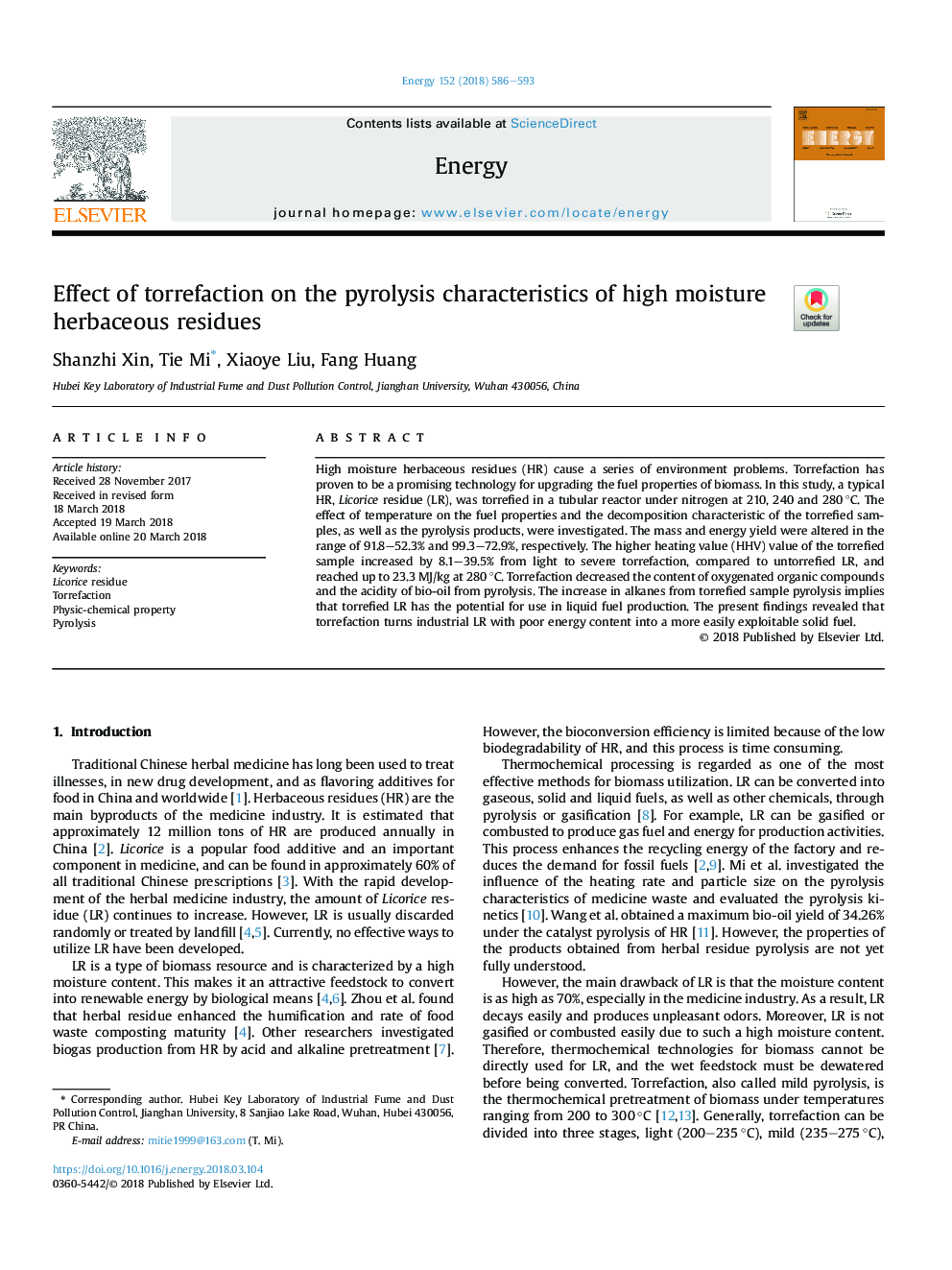| Article ID | Journal | Published Year | Pages | File Type |
|---|---|---|---|---|
| 8071687 | Energy | 2018 | 8 Pages |
Abstract
High moisture herbaceous residues (HR) cause a series of environment problems. Torrefaction has proven to be a promising technology for upgrading the fuel properties of biomass. In this study, a typical HR, Licorice residue (LR), was torrefied in a tubular reactor under nitrogen at 210, 240 and 280â¯Â°C. The effect of temperature on the fuel properties and the decomposition characteristic of the torrefied samples, as well as the pyrolysis products, were investigated. The mass and energy yield were altered in the range of 91.8-52.3% and 99.3-72.9%, respectively. The higher heating value (HHV) value of the torrefied sample increased by 8.1-39.5% from light to severe torrefaction, compared to untorrefied LR, and reached up to 23.3â¯MJ/kg at 280â¯Â°C. Torrefaction decreased the content of oxygenated organic compounds and the acidity of bio-oil from pyrolysis. The increase in alkanes from torrefied sample pyrolysis implies that torrefied LR has the potential for use in liquid fuel production. The present findings revealed that torrefaction turns industrial LR with poor energy content into a more easily exploitable solid fuel.
Keywords
Related Topics
Physical Sciences and Engineering
Energy
Energy (General)
Authors
Shanzhi Xin, Tie Mi, Xiaoye Liu, Fang Huang,
